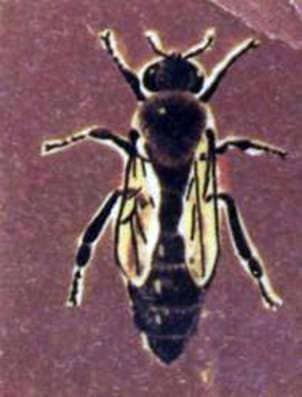
This section will be brief, since it is not worth much to say that little is known.
But something to say is still necessary. Having learned about the clever arrangement of honeycombs or about the ability of bees to yield to training, about their dances and their use of the heavenly compass, and also about the energetic disposal of drones at a time when they become an unnecessary family, the reader may be inclined to attribute bees to extraordinary beats. However, it is not. The expediency of any action does not yet prove that this action is being done deliberately.
Usually, we consider it an intentionality to act in such a way that any being, using already accumulated life experience, acts correctly in a new, unusual position for himself. And this requires the ability to remember what happened before, to comprehend the situation, linking it with the images of memories.
One prerequisite for this is that bees have a good memory. Experiments with training, which were discussed in previous chapters, are quite convincing in this. If you insure bees on some color, they even after a break for several days because of bad weather are looking for food and paper of the same color. For weeks, and sometimes until the end of life, bees remember the smell they were trained to for a short time, even if they did not then meet with them.
There is also no doubt that bees can catch a certain connection between phenomena. If we, for example, giving bees feed in a blue box, successfully train them in blue, this serves as proof that the bees bind the blue color that they saw, penetrating into the box / with the food found inside, that they “understood” the well-known relationship between these phenomena.
But this psychic ability of bees can not be overestimated, since it is limited to a very narrow framework. I remember here a story about a single bee Halicodome. This is a close relative of our honey bee, but it does not belong to social insects. Khalikodoma builds for each egg a separate circular cell of clay and fills it with honey until the reserve is sufficient to ensure that the larva, which is removed from the egg, can feed it to full maturity. Collecting such a stock, the bee lays an egg on it, seals the opening of the cell to protect its offspring from enemies, and, not caring anymore about its fate, it is taken to build the next cell.
One researcher tells about the next experiment. Taking advantage of the time when a mother-bee collects bribes on flowers, it makes a hole in a cell just built, but not yet filled with food. Upon returning, the bee notices the change that has taken place. This can be seen from the way it follows the antennae gaping hole. However, the bee does not think of closing the hole, although it would not have been very difficult for her. Instead, it is, as usual, freed from the stern burden, which falls out through the hole. I wear it after shoveling it out on the ground after every flight for a bribe.
It was to be expected that, having noticed the failure of his work, the bee would bring the food with even greater zeal or throw this cell. But neither one nor the other does not happen. The bee brings as much food as necessary for the development of the larva under normal conditions. Then she lays an egg, which immediately falls through the broken bottom to the ground, and carefully seals the cell with a hole gaping from below.
I do not know whether this description is true in all its details. If not, then, in any case, it is superbly coined and well consistent with multiple similar observations on other insects and honey bees. I could not bring from their lives a single example of intelligent action. Even the training experiments mentioned above did not work out as soon as the task at hand deviated from the habitual actions developed for hundreds of millennia.
Nature itself, so to speak, armed them with a psychic ability to bind, for example, a floral scent with a search for food. But it is enough to apply for dressing is not floral, but, for example, a putrefactive smell, so that it is completely failed. The putrefactive smell does not seem unpleasant to bees, as they visit the troughs in boxes with this odor without the slightest hesitation. It can be proved by appropriate experience that the “bee-nose” perceives this smell as well as the floral one. However, the ancestors of our experimental bees have never found honey in any connection with the putrefactive odor. And the mental capabilities of one bee does not allow it to catch the connection between these two phenomena on its own.
Thus, the ability to learn from bee colonies is limited by the narrow scope of what is important to them under natural conditions and what they have become accustomed to since ancient times. The bee gets used to the blue color or the smell of the dog rose if it finds food near them, just like the innumerable generations of its ancestors. She inherited from them the ability to build hexahedral wax cells, to form an update, to indicate when: the help of dances place a good bribe and pinch the drones when their time passed. With strict correctness, the usual conditions cause habitual actions.
Do bees know anything of what they do? No one can answer this question with certainty. No one has yet succeeded in solving the riddle, how the ancestors of bees acquired the abilities that the present generations inherited from them.
Пчеловодные павильоны. Ежевика с медом.
Biology of the bee family